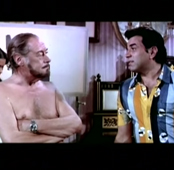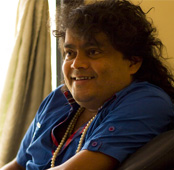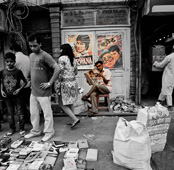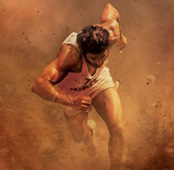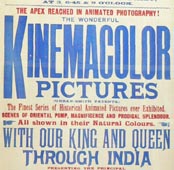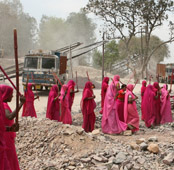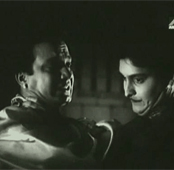-
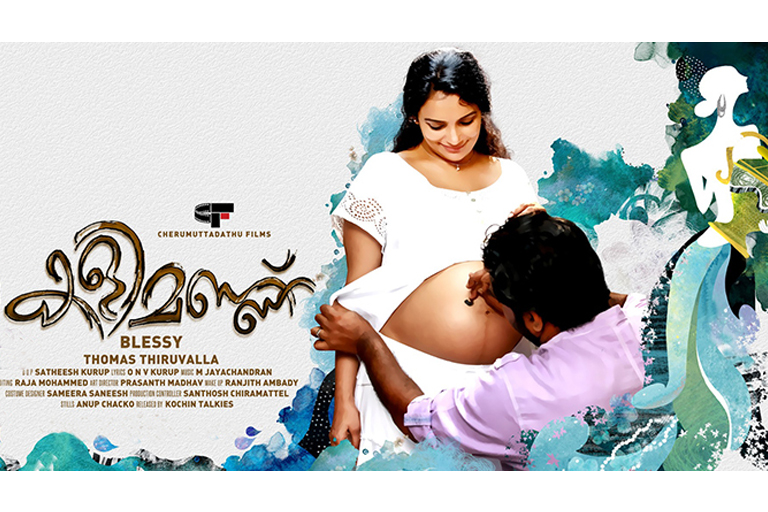 Poster of Kalimannu
Poster of Kalimannu
Actress Shwetha Menon’s decision to incorporate footage of her giving birth to her daughter in a film has led to an outcry. A TBIP report.
It is not uncommon for a woman to work when she is pregnant unless, perhaps, if she happens to be an actress. “I wanted to work during my pregnancy. I just never thought I would be working up to the delivery,” says 39 year old Malayalam film actress Shwetha Menon. She managed to work on three films during her pregnancy. Of these three, Kalimannu stands out. Kalimannu explores a woman’s journey to becoming a mother. Not only did Menon’s pregnancy fit in as part of the film’s narrative, her delivery was also shot on camera and the footage of her giving birth to her daughter was incorporated in the film. While this was quite unconventional, Menon did not anticipate the furore that it would cause, even way before its release on the 22nd of August.
Menon, who has won the Kerala State Film Award for the Best Actress twice, met with Director Blessy at an awards function when she was pregnant. She had been keen to continue working at that point and had known that Blessy had the perfect story for her. “He got to know that I’m pregnant and everything. Then we spoke about it and then Kalimannu happened. It was just the process and timing. Nothing else.”
While the film seeks to explore the connection between a mother and her unborn child, the conflict at its centre is made up of the resistance the protagonist, played by Menon, faces when she uses the sperm of her husband, who is brain dead, to get pregnant via Intra Vitro Fertilization. In the film her decision causes enormous controversy— leading to objections from politicians, religious heads and society in general. As life follows art, these controversies have been closely mirrored in real life, when public figureheads began to speak out against the use of the live footage of the birth in the film. While the reel version takes on a more dramatic tone, the objections raised—both in the film and outside of it—have revolved around the ‘values’ that stem from ‘Indian tradition’ and the ‘sanctity of motherhood’.
In November 2012, while the film was still under production, word spread about Menon’s actual delivery being shot to be used as a part of the film’s narrative. G. Karthikeyan, Speaker of the Kerala Legislative Assembly, was one of the first to object. He asked why women’s rights groups who protest against the derogatory portrayal of women in advertisements were not concerned. Karthikeyan’s statement sparked off other voices of protest. Sobha Surendran, President of the BJP Mahila Morcha in Kerala, argued vehemently against artistic license in this case: “This is not art. In my opinion, using a woman’s delivery is not art. Art should be manifested through the acting. The emotions that a woman goes through in her delivery should not be (conveyed through) the expressions captured in the actual labour room. If it is (meant for) art, it should be recreated for art. There are so many films in which the actresses have acted out such scenes.”
Karthikeyan and Surendran are yet to the see the film, which is still running in theatres, but they stand firmly by their statements. Says Karthikeyan, “At the time, when the director himself had said that they were going to shoot this scene, I had asked whether it was the right thing to do. Didn’t it go against motherhood? If you ask me tomorrow, I will still stand by it.”
Surendran wonders if the scene was just a gimmick for the film to grab the audience’s attention. “To make the film a success, they were asking politicians to watch the film,” she says. “Even to me, the producer said, ‘Watch the film and express your opinion to various TV Channels and reporters.’ This is the first time a producer has asked this of me. It has never happened before.”
Surendran also believes that the use of this footage in a film violates the sanctity of childbirth. “Delivering a baby is sacred. Mothers here have done it with great care, with regard for privacy. She (Menon) tried to use it as an experiment in her film. She has the right to do that. And just as she has the right to do that, to show live birth to the audience, mothers have a right to say that it is wrong.”
Whether the scene was a publicity stunt for the film seems immaterial because the actress had consented to it being shot and shown. However, Surendran did more than just “say that it is wrong”. She asked that the Government of Kerala to prevent the film from screening in theatres, even asking for the Chief Minister Oommen Chandy to intervene, and threatened to stall the film if it was released.
The exhibitors appear to be disgruntled by the scene as well. The Kerala Film Exhibitors Federation President, Liberty Basheer, was in agreement with Karthikeyan and Surendran. “My main objection was that a scene like that cannot be shown in theatres,” he says. “And this decision was taken by the whole federation.”
Even though the controversy raged on, nobody really knew what the objectionable scene looked like, what it included and what it didn’t. Through the uproar, Menon remained unfazed: “There is a saying ‘Kaanatha poorathe patti nammakku parayam pattilla. (One can’t talk about a carnival one didn’t go to).’ She explains, “I don’t think we tried to disrespect a single woman on this earth. We kept saying ‘Let Kalimannu come. Kalimannu is not about the delivery. Kalimannu has another point of view. It’s not only the delivery and it’s not that thing that we are planning to show, as you are thinking.’ There were so many things that we were trying to say but nobody was listening.”
One of the most vocal voices of support from the Malayalam film industry has been B. Unnikrishnan, the General Secretary of the Film Employees Federation of Kerala. He also has a cameo in the film, as himself. In the film, just as in life, Unnikrishnan argues against the protagonist’s detractors, supporting Meera’s decision to use the sperm of her husband to conceive her child. To the various hecklers of the movie, he has this to say: “Everyone knows that it’s injustice to do this to a work of art. Especially because the issue has to do with a woman, everyone is panicking. It reveals the patriarchy within us. For instance, Mohanlal was nude in a scene from Blessy’s film Thanmathra. Then it didn’t have this controversy. But when it comes to Shwetha Menon’s delivery there is one. It just shows our male bias.”
Once the film was complete, the Censor Board cleared it with a U/A certificate and the Kerala Film Chamber of Commerce extended their complete support. Speculations were rife over whether the final cut had the objectionable scenes— given that the protests had been raging on from before it was completed. “When newspaper reports came out, it said that the scenes had been censored. Blessy made a statement saying that that is incorrect and that the scene is still there,” Basheer says. Media reports quoted Blessy as saying that there were five scenes in the film that showed the delivery of the child.
“Even when discussing the film the day before its release, Blessy and Shwetha were not ready to reveal to the public, whether these scenes were a part of the film,” says Surendran. “And, if so, which of them were. The director and the actor were being secretive.”
Menon rejects the notion that they needed to give an explanation or clarify these doubts. “Everyone asked us why we weren’t defending the film. The only way we could defend it was by releasing the film, a film that has a U/A certificate. The same persons should have gone and seen the film and commented on it.”
Both Basheer and Surendran believe that their protests were successful and that the film was edited to suit their demands. Surendran says, “They have not been able to include the scenes to the extent that Blessy had thought, or Shwetha had wanted to, and that has been precisely because of the protests by the public.” Basheer insists further that there were cuts made to tone down the scene, even after the Censor Board had cleared the film, and only then did the Kerala Film Exhibitors Federation agree to screen the film. “Earlier, the film had scenes from the delivery itself. What you now see mostly is just doctors.”
Menon denies this. According to her, it was not the Kerala Film Exhibitors Federation but Basheer alone who had objected to the film and there were no changes made to the film after the censor certificate had been obtained.
Unnikrishnan agrees: “That’s incorrect. There have been no cuts (in the child-birth scene). No other agency has a right there. It was the director’s cut which was approved by the Censor Board, and it was the same film which was exhibited.”
***
Until its release the film remained embroiled in controversy. A member of the public, Mada Swamy, filed a petition in the Kerala High Court asking for the delivery scenes to be removed from the film. The High Court however rejected the petition on the ground that the scenes had been filmed with the consent of Menon.
“It is my body and I have full right to do whatever I want to do,” says Menon. “I decide where I should take it. I should be considered. I’m very grateful to God that I could work.” This attitude irks the BJP’s Mahila Morcha no end. Says Surendran, “I’m still against a woman taking the decision to use her delivery, in the name of artistic license, not through acting but as it is, and selling it for a film.” Surendran cites the example of another actress. “On the Indian silver screen, I don’t think Shwetha Menon has risen to the heights that Aishwarya Rai has. When she was pregnant, and one of India’s biggest stars, Amitabh Bachchan said that, ‘I don’t want a crowd greeting the arrival of my grandchild.’ In a context where actresses and women are guarding their privacy, Shwetha herself said in an interview that when she knew that she was pregnant she thought about how it could be used for this film. That she used her delivery as an opportunity is my objection.”
Menon says of Surendran, “Somebody of that stature making that statement can affect a lot of people. When you say something about the film, I don’t mind. But when the same person points a finger at my personality or my character that is the only time I take it as an offence. I don’t give her a right. Nobody gives her the right to indulge in character assassination.”
Unnikrishnan deems the whole controversy unfortunate. He says, “I am not judging the quality of the film or the issues it raises. The problem is that these are very conservative and orthodox views on a woman, her body and her sexuality. If there is any such issue, it is the Censor Board that should take care of it, as a government appointed body. People outside of it shouldn’t be doing its job.”
And yet they are.
The Hands that Rock the Cradle
ArticleSeptember 2013
 By Meryl Mary Sebastian
By Meryl Mary Sebastian
Meryl Mary Sebastian is Junior Correspondent at The Big Indian Picture



